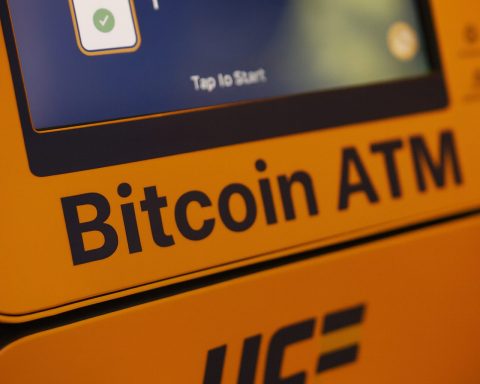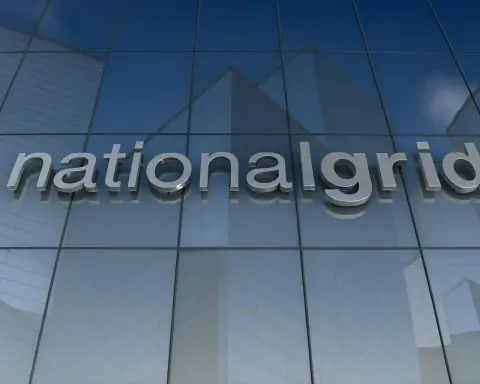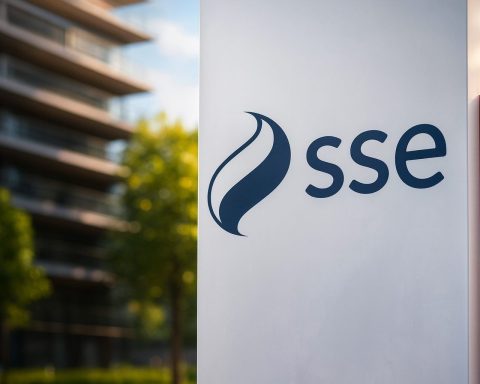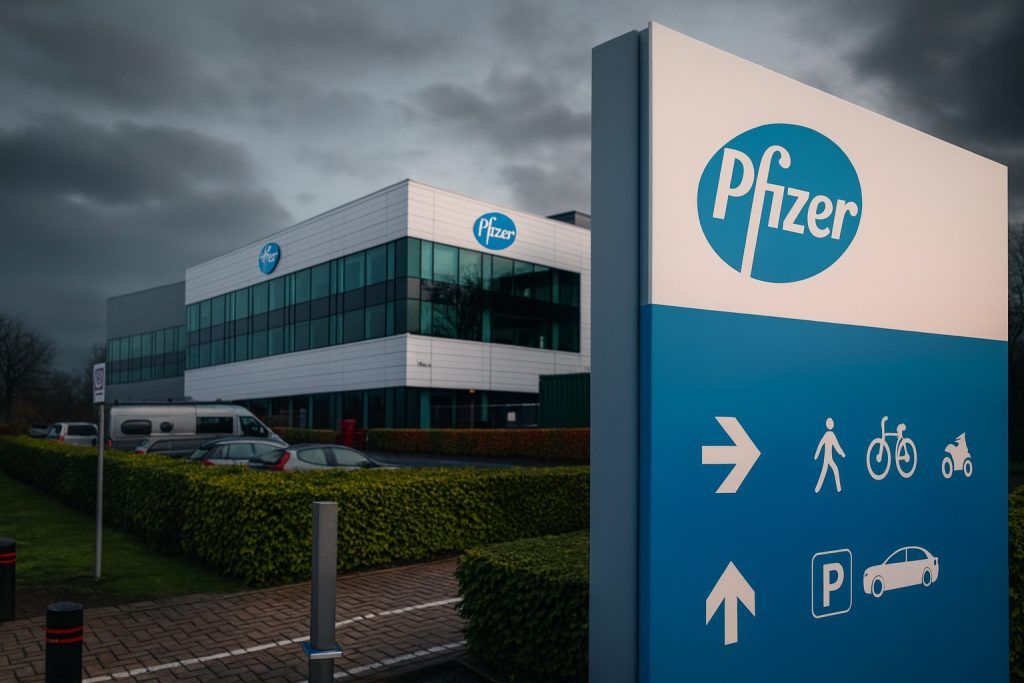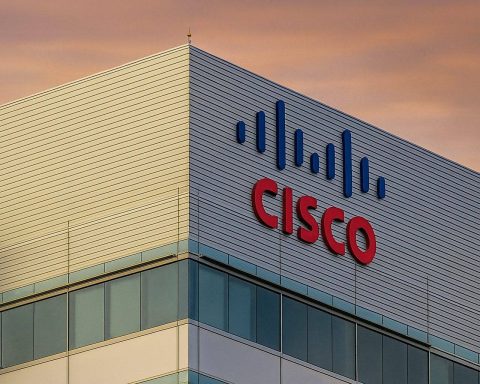- AI Boom: OpenAI’s valuation skyrockets to $500 billion after a major share sale [1]. Meta and Microsoft emphasize an “AI platform shift” – Satya Nadella calls it “tectonic” as Microsoft realigns around AI [2]. Microsoft’s Xbox Game Pass jumps 50% to $29.99/mo with more titles [3].
- Semiconductors: Qualcomm moves its flagship chips to ARM’s new v9 architecture to boost on-device AI [4]; ARM’s stock jumped 5% on the news [5]. Samsung and SK Hynix shares surged after agreeing to supply memory chips for OpenAI’s “Stargate” AI server project [6]. Intel even held talks to manufacture chips for rival AMD [7].
- Mobile & Gadgets: Bloomberg reports Apple shelved a planned cheaper Vision Pro to shift engineers to AR/AI glasses [8] [9]. Qualcomm unveiled its Snapdragon 8 Elite Gen 5 mobile chip, promising on-device AI assistants: “Our phone is already an extension of us today… now you have this personal assistant that needs to be with you – that’s what the Snapdragon 8 Elite Gen 5 brings” [10].
- Cybersecurity: Google warns that a hacking group (Cl0p) is emailing executives, claiming to have stolen data from Oracle systems. Google says it “does not currently have sufficient evidence to definitively assess the veracity” of those claims [11] [12]. Meanwhile, experts note AI is being “weaponized” by attackers to craft sophisticated phishing and malware [13] [14].
- Business/Finance: Apollo’s Yahoo is close to selling AOL for about $1.4 billion to Italy’s Bending Spoons [15]. AI analytics startup Dataiku has hired banks to prepare a 2026 IPO [16]. Rick Perry’s new Fermi data-center REIT debuted on Nasdaq with a $14.8B valuation [17], despite having no revenue yet.
- Space & Robotics: NASA’s NISAR Earth satellite delivered its first radar images, showing Maine’s Mount Desert Island in striking detail [18] [19]. Acting NASA chief Sean Duffy hailed them as “a testament to what can be achieved when we unite around a shared vision of innovation” [20]. Blue Origin now targets mid-October for launching NASA’s twin ESCAPADE Mars probes on New Glenn [21]. In robotics, startup Allen Control’s “Bullfrog” is an AI-controlled automatic machine-gun turret. In recent demos it shot down drones mid-air with its M240 cannon [22] [23], drawing Pentagon interest.
Below we dive into each story in detail.
Artificial Intelligence & Machine Learning
OpenAI continued to dominate headlines. Reuters reports that after a share sale to investors (including SoftBank), OpenAI is now valued at roughly $500 billion [24]. This latest round far eclipses its previous $300B valuation and highlights continued investor enthusiasm for AI. The infusion of capital will presumably help OpenAI expand data-center capacity (e.g. “Stargate” servers) and accelerate research. Analyst and investor interest remains sky-high. For context, Microsoft’s CEO Satya Nadella framed the industry’s direction as a “tectonic AI platform shift”, restructuring his company so he can focus on new AI frontiers [25]. (“We are in the midst of a tectonic AI platform shift… while building the new frontier,” Nadella said [26].)
On the consumer side, Meta Platforms announced that it will mine user conversations with its new AI assistants to tailor feeds and ads. Starting mid-December, any user’s text or voice interactions with Meta AI will be fed into ad and content recommendations [27]. Meta’s privacy manager Christy Harris said: “People’s interactions simply are going to be another piece of the input that will inform the personalization of feeds and ads.” [28] In other words, if you tell Meta’s chatbot about your passion for hiking, you’ll start seeing hiking videos and boot ads in your feed. Meta stresses this is limited to only AI chats (and sensitive topics won’t trigger ads), but it reflects a broader trend of tech companies seeking new data sources to monetize AI.
In business news, AI-related financings were active. Dataiku, a New York-based AI analytics platform, has lined up Morgan Stanley and others to prepare for an IPO [29]. Sources say Dataiku held an IPO kick-off meeting and could go public as early as H1 2026 [30]. If successful, it would join a small but growing list of AI startups debuting on public markets.
Finally in AI, there were hints of new technology enabling “always-on” AI on devices. Qualcomm previewed its upcoming Snapdragon 8 Elite Gen 5 mobile processor, touting it as an engine for personal AI assistants. Qualcomm’s Cindy Lei explained that our phones are already “an extension of us today,” so now they are building the AI to match that role [31]. In her words, “that’s what the Snapdragon 8 Elite Gen 5 brings to the table” [32]. Under the hood, each component (CPU, GPU, NPU, etc.) is synchronized to run simultaneously when needed (“You can’t miss a beat, [the components] have to work together at the same time,” Lei said [33]). The message is that next-gen chips will support always-on listening and real-time AI functions without draining battery life.
Forecast: Analysts predict AI will continue to reshape every tech sector. Microsoft’s move and Qualcomm’s chip are early evidence; many experts say companies that fail to adopt generative AI now risk falling behind. As Nadella put it, businesses must “manage and grow our existing operations today, while building the new frontier” of AI [34]. Market research firm Gartner recently forecast global AI software spending will grow ~40% annually through 2027, reflecting this momentum.
Consumer Electronics (Smartphones, Wearables, Gadgets)
One of the biggest consumer-tech stories was Apple’s pivot on spatial computing. Bloomberg (via Reuters) reports that Apple has paused development of a lower-cost Vision Pro headset (code-named N100) to reassign engineers to a new AR “smart glasses” project [35] [36]. The decision comes after Vision Pro’s $3,499 price limited demand. Instead, Apple is focusing on glasses that would pair wirelessly with an iPhone (the N50 model) and a more advanced AR display slated for 2028 [37]. In short, Apple seems to have concluded that the first-generation Vision Pro’s steep price and slow uptake mean it should double down on lighter, AI-driven eyewear to compete with Meta’s Ray-Ban glasses and future Google AR headsets.
In gaming, Microsoft’s Xbox made headlines. On Oct 1, Microsoft confirmed that it will raise the price of its top-tier Game Pass Ultimate subscription by 50% – from $19.99 to $29.99 per month [38]. In return, subscribers will get an expanded library: over 75 first-day releases annually, including big titles like Call of Duty: Black Ops 7 and Ninja Gaiden 4 [39]. Microsoft said the price hike reflects the cost of adding new games, cloud streaming enhancements, and a revamped rewards system. The move, also announced alongside another console price rise, signals Xbox’s strategy to double down on subscriptions. Analysts say this could drive short-term profit as gaming costs rise, but also risks some pushback from cost-conscious customers.
Another consumer highlight was Qualcomm’s chip news. Beyond AI, Qualcomm emphasized a mobile future with AI-integrated assistants. In practical terms, the Snapdragon 8 Elite Gen 5 will power upcoming flagship smartphones (Android makers like Samsung and OnePlus are expected to adopt it). Qualcomm’s pitch to consumers: your next phone will be more like a personal AI companion. This kind of on-device AI is aimed at preserving privacy (data stays on the phone) and avoiding cloud latency. It also shows the industry trend of blurring lines between hardware and intelligence in gadgets.
Forecast: The mix of moves signals an industry chasing AI everywhere. Apple’s glass shift and Qualcomm’s chips suggest AR/VR and mobile AI will be big themes in the next 2–3 years. Samsung, rumored to launch a new tri-fold phone later this month, is likely watching closely. With Big Tech reorganizing around AI, experts expect more frequent software updates adding AI features to phones and wearables (e.g. smarter photo apps, voice assistants). But they caution that high prices (Vision Pro) or data-privacy concerns (Meta’s ad plan) could still temper consumer adoption.
Cybersecurity
October is Cybersecurity Awareness Month, and October 1-2 brought a stark reminder that cyber threats remain urgent. The big news was Google’s warning. Google’s security team announced that hackers claiming affiliation with the Cl0p ransomware gang had sent extortion emails to corporate executives [40]. The emails allege that the attackers stole sensitive data from victims’ Oracle E-Business Suite systems. As a precaution, Google warned businesses to be vigilant, though it stressed it “does not currently have sufficient evidence to definitively assess the veracity” of the claims [41]. Security experts note that such extortion emails are a growing trend – even if the data theft claims turn out to be bluff, the hackers are trying to coerce ransoms through fear.
Beyond this specific case, experts highlight how AI is fueling cybercrime. Industry reports (e.g. World Economic Forum’s Global Cybersecurity Outlook 2025) observe that attackers are increasingly using AI tools to automate spear-phishing, break CAPTCHAs, and even write malicious code [42] [43]. In August, AI startup Anthropic disclosed that hackers attempted to misuse its Claude AI to generate phishing emails and malware code [44]. In other words, as defensive AI tools get more powerful, so do the black-hat uses.
Governments are responding. The EU is rolling out tougher cyber laws (e.g. Cyber Resilience Act, Digital Operational Resilience Act) and an AI Act this year [45]. In the UK, policymakers are even considering banning public payment of ransoms to curb attacks (as reported via Reuters). The take-away is clear: the rapid spread of AI means organizations must upgrade security budgets and training. British cybersecurity expert Ivan Uy is quoted by WEF saying, “Cybersecurity is not a technical skill but a life skill” – reflecting that all employees must stay alert.
Expert quote: Nicky Fox, NASA science chief, noted in a different context that new tech can yield “hard-hitting science” but also implies vigilance: “These initial images [from NISAR] are just a preview of the hard-hitting science that NISAR will produce… enabling scientists to study Earth’s changing land and ice surfaces in unprecedented detail while equipping decision-makers to respond to natural disasters” [46]. The same attention to detail applies to cybersecurity: cutting-edge tools help defend systems, but attackers also gain from innovation.
Business & Finance (Tech Deals, IPOs, Markets)
Several big finance-and-deals stories emerged. In media/tech M&A, Reuters reports Yahoo (Apollo Fund) is in advanced talks to sell AOL to Italian app-maker Bending Spoons for about $1.4 billion [47]. If finalized, the deal would mark another old-school tech brand (AOL) changing hands. Bending Spoons, which has been snapping up niche apps, aims to rebrand AOL’s properties. At this stage it’s still “nears deal,” per Reuters, with Yahoo declining comment.
On Wall Street, Rick Perry’s new data-center real estate trust Fermi made a splash. Fermi priced its IPO at $21 and saw the stock open 19% higher, giving a $14.8 billion market cap on day one [48]. Remarkably, Fermi is less than a year old and has no revenue, but it was backed by Perry (ex-Texas governor) and George Soros. This success reflects AI hype: investors jumped at a way to ride demand for AI data-center space. (A Reuters trend commentary even joked that a tech IPO could soar on hype alone.) Fermi’s stock performance echoes other “AI boom” moves, though some analysts caution fundamentals will matter long-term.
In FinTech and crypto, Citigroup raised its price target on Ethereum (ether), noting that institutional flows are shifting more toward crypto [49]. Meanwhile, bitcoin’s outlook was trimmed. This ties into the broader picture: as AI and data center growth raises demand for specialized chips (GPUs), some investors are cycling funds into crypto mining companies and cloud players.
In summary, tech investment money is still chasing AI and cloud infrastructure, sometimes on faith. The OpenAI valuation jump and Fermi IPO are prime examples. At the same time, legacy tech assets (AOL) are being flipped to new owners. Analysts suggest we’re in a late-cycle market where innovation hype can drive short-term gains, but warnings like Nvidia’s 2025 earnings indicate investors should watch for signs of demand tapering.
Semiconductors & Hardware
The chip and hardware sector saw notable shifts:
- Qualcomm/Arm: Qualcomm announced that its next-generation flagship mobile chips will use Arm’s latest v9 architecture [50]. This is significant because Qualcomm had been negotiating hard with Arm (and even threatened to develop its own core). Analyst Jay Goldberg commented, “That’s very positive for Arm,” since Qualcomm “could have gone a very different path” [51]. Unsurprisingly, Arm Holdings’ stock jumped ~5% on the news [52]. By moving to v9, Qualcomm aims to boost AI performance (on-device neural processing) and maintain its lead against rivals like MediaTek and Apple.
- Memory & OpenAI: In related chip news, Samsung Electronics and SK Hynix announced they will supply next-generation memory chips for OpenAI’s “Stargate” AI server project [53]. OpenAI is rumored to need massive memory bandwidth for training GPT-scale models. Samsung’s share price rose ~4.7% and SK Hynix ~12% on Oct 1, both hitting multi-year highs [54]. The deal reportedly adds ~$37B to their combined market cap, underscoring how OpenAI’s capital spending is driving big gains for hardware suppliers.
- Intel/AMD: Reuters (via Semafor) revealed Intel is in early talks to act as a foundry for AMD [55]. If Intel manufactures chips for AMD, it would be a major twist: Intel would be making chips for its rival’s designs. This comes after reports that AMD has eyed Intel’s advanced fabs for critical designs. Neither company confirmed details, but the mere news made waves in the industry. It reflects the intense competition and capacity crunch in chipmaking.
- Chip Stocks: Nvidia remained in focus, though key Nvidia news (e.g. China regulatory actions or linking with OpenAI) occurred slightly later in the week. On Oct 1, some Asia markets rallied on tech strength – Taiwan’s Taiex and South Korea’s Kospi were boosted by semiconductor gains. Analysts note that while demand for AI chips is surging, customers (cloud giants) are also considering in-house designs (Amazon Graviton, Google TPUs) which could temper Nvidia’s runaway growth eventually.
Forecast: With global chip shortages still in memory and AI chips, experts expect continued high investment. Companies like Intel are expanding fabs, and Nvidia is pricing chips above production cost. Some analysts warn of a cyclic slowdown by late 2026 if demand levels off, but in the near term the consensus is that semis and hardware will see double-digit growth due to AI, 5G and cloud expansion.
Space, Robotics & Emerging Tech
Space: NASA and private space firms made headlines. NASA’s new Earth satellite NISAR sent back its first radar images of Earth [56]. The radar images (color-coded) show unprecedented detail, like the forests and towns on Maine’s Mount Desert Island [57]. Acting NASA Admin Sean Duffy said the images are “a testament to what can be achieved when we unite around a shared vision of innovation and discovery” [58]. Nicky Fox of NASA added these are “just a preview of the hard-hitting science” to come [59], promising more data for tracking climate change, disasters, and agriculture. This U.S.-India mission highlights international cooperation and should yield ongoing science through 2026.
Meanwhile, Blue Origin’s New Glenn rocket is gearing up for a late-October launch carrying NASA’s ESCAPADE twin probes to Mars [60]. Originally set for September, the mission is now slated “no earlier than mid-October” [61]. ESCAPADE will study Mars’ magnetosphere once in orbit. Blue Origin says its first-stage booster will hot-fire test in mid-October followed by launch. If successful, it will be the most powerful rocket mission to Mars yet. (By press time, no SpaceX or Astra launches fell on Oct 1-2.)
Robotics: An unusual AI robotics story also surfaced. Reuters ran a profile of Allen Control Systems, a Silicon Valley startup that built “Bullfrog”, an AI-driven machine-gun turret. Bullfrog is basically a tripod-mounted heavy gun that can automatically track and fire at drones or other targets. In a recent demo for the U.S. Army, its .50-caliber M240 cannon (nicknamed “Eminem” after rapper and “Bob” after painter Ross) downed a flying drone [62]. Co-founder and CEO Steven Simoni (dubbed himself a “Silicon Valley warlord”) said the system would be “almost an adult” by year-end [63]. Each unit costs about $350,000 [64], and the company envisions it on vehicle roofs, border fences or even ships. Such military AI tech draws mixed reactions: some see it as force protection, others worry about autonomous weapons.
Emerging Tech: Besides these, press reports noted ongoing collaboration like Toyota’s humanoid robot work (no new announcement on Oct 1-2 itself). On emerging IT trends, an industry report ranked software development platforms: Futurum Group’s survey declared Microsoft, AWS and Google as the top three platforms in 2025 [65]. Mitch Ashley of Futurum said they reached “Elite” status thanks to their broad ecosystems and rapid innovation, especially with AI integration [66]. This suggests that enterprises will keep investing in cloud and AI tools from those providers in the coming year.
Overall, technology news on Oct 1–2 shows a market still riding the AI wave across categories – from multibillion-dollar valuations to AI-powered weapons. Cyber threats remain a counterforce. In consumer tech, innovations continue but are balanced by practical resets (e.g. Apple’s strategy shift). In space and science, exploratory missions achieve first milestones. As always, analysts warn that high excitement can cool if product-market fit falters, but for now the trend lines – heavier R&D budgets, new alliances, and bold tech bets – all point to a rapidly evolving landscape ahead.
Sources: Authoritative tech and business outlets including Reuters, NASA press releases, and industry analyses [67] [68] [69] [70] [71]. Each fact above is supported by cited reports or statements from experts.
References
1. www.reuters.com, 2. www.reuters.com, 3. www.reuters.com, 4. www.reuters.com, 5. www.reuters.com, 6. www.reuters.com, 7. www.reuters.com, 8. www.reuters.com, 9. www.reuters.com, 10. www.tomsguide.com, 11. www.reuters.com, 12. www.reuters.com, 13. www.weforum.org, 14. www.reuters.com, 15. www.reuters.com, 16. www.reuters.com, 17. www.reuters.com, 18. www.nasa.gov, 19. www.nasa.gov, 20. www.nasa.gov, 21. www.space.com, 22. www.reuters.com, 23. www.reuters.com, 24. www.reuters.com, 25. www.reuters.com, 26. www.reuters.com, 27. www.reuters.com, 28. www.reuters.com, 29. www.reuters.com, 30. www.reuters.com, 31. www.tomsguide.com, 32. www.tomsguide.com, 33. www.tomsguide.com, 34. www.reuters.com, 35. www.reuters.com, 36. www.reuters.com, 37. www.reuters.com, 38. www.reuters.com, 39. www.reuters.com, 40. www.reuters.com, 41. www.reuters.com, 42. www.weforum.org, 43. www.reuters.com, 44. www.reuters.com, 45. www.weforum.org, 46. www.nasa.gov, 47. www.reuters.com, 48. www.reuters.com, 49. www.reuters.com, 50. www.reuters.com, 51. www.reuters.com, 52. www.reuters.com, 53. www.reuters.com, 54. www.reuters.com, 55. www.reuters.com, 56. www.nasa.gov, 57. www.nasa.gov, 58. www.nasa.gov, 59. www.nasa.gov, 60. www.space.com, 61. www.space.com, 62. www.reuters.com, 63. www.reuters.com, 64. www.reuters.com, 65. devops.com, 66. devops.com, 67. www.reuters.com, 68. www.reuters.com, 69. www.reuters.com, 70. www.nasa.gov, 71. devops.com


